Grow a Crimson Bottlebrush Shrub for Pollinators
Updated: May 23, 2023
If you need a plant for pollinators and birds, crimson bottlebrush is a perfect pick! Learn how to grow this heat-tolerant shrub.
Crimson Bottlebrush Shrub Care
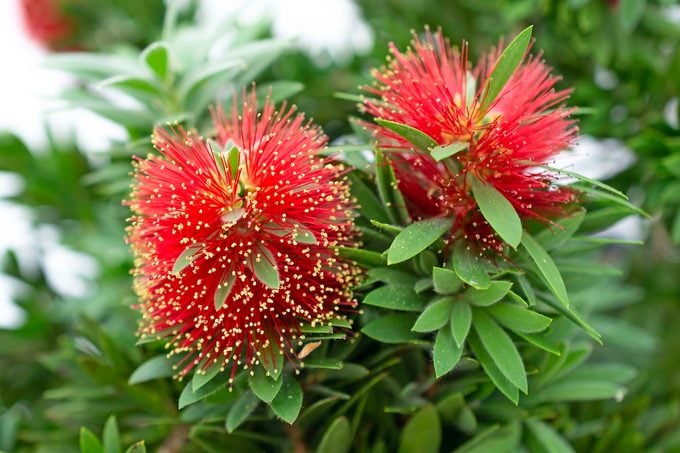
- Common name: Crimson bottlebrush
- Botanical name: Callistemon citrinus
- Growing zones: 8 to 11
- Light needs: Full sun
- Soil needs: Acidic, moist, well-draining
- Attracts: Bees, birds
This broadleaf evergreen with distinctive flowers is grown as a large shrub or small tree in warm areas. Bottlebrush typically reaches 8 to 15 feet tall and wide. For small spaces, try Dragon Fire, which only reaches 3 feet tall and wide.
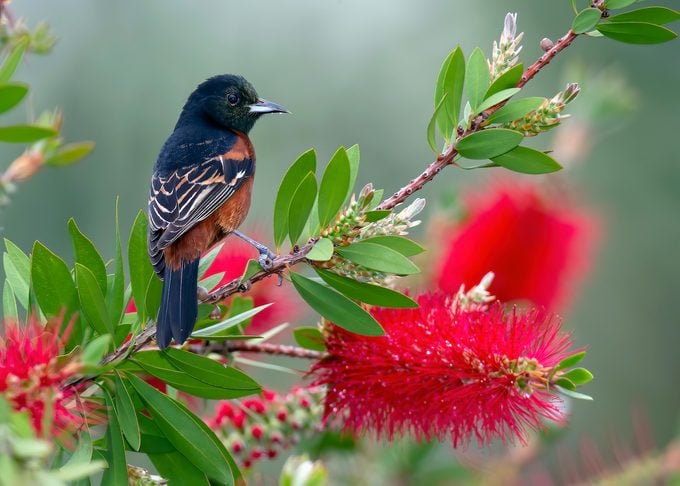
Northern gardeners can grow crimson bottlebrush in a container outdoors and overwinter it in a sunroom or greenhouse, since the plant is cold hardy down to 20 to 25 degrees. It’s resistant to most diseases, and deer usually don’t bother it. When growing this plant indoors, keep an eye out for spider mites and scale.
Discover the top 10 best hummingbird bushes to grow.
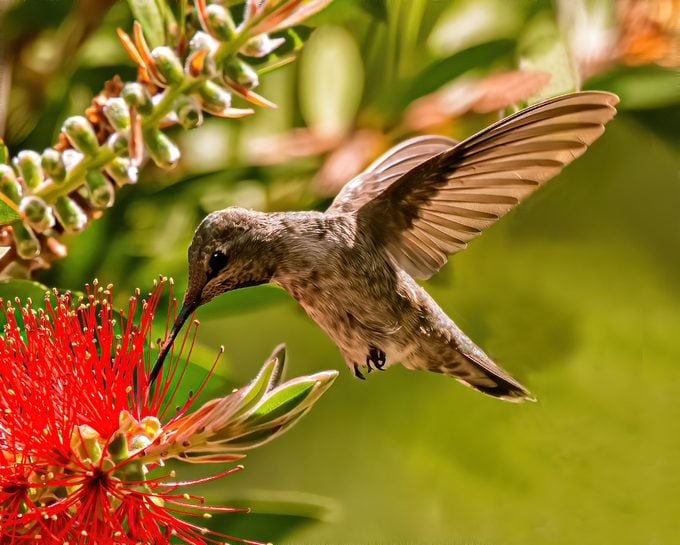
Plant bottlebrush in full sun (six to eight hours of consistent sunlight) in Zones 8 to 11. It’s not too picky about the soil it’s planted in, but it grows best in acidic, moist soils with good drainage. It also prefers to have consistent moisture when first established—so remember to keep it watered!
Want to attract birds in warmer climates? Check out these drought-tolerant plants and trees that are perfect for birds.
Crimson Bottlebrush Shrub Benefits
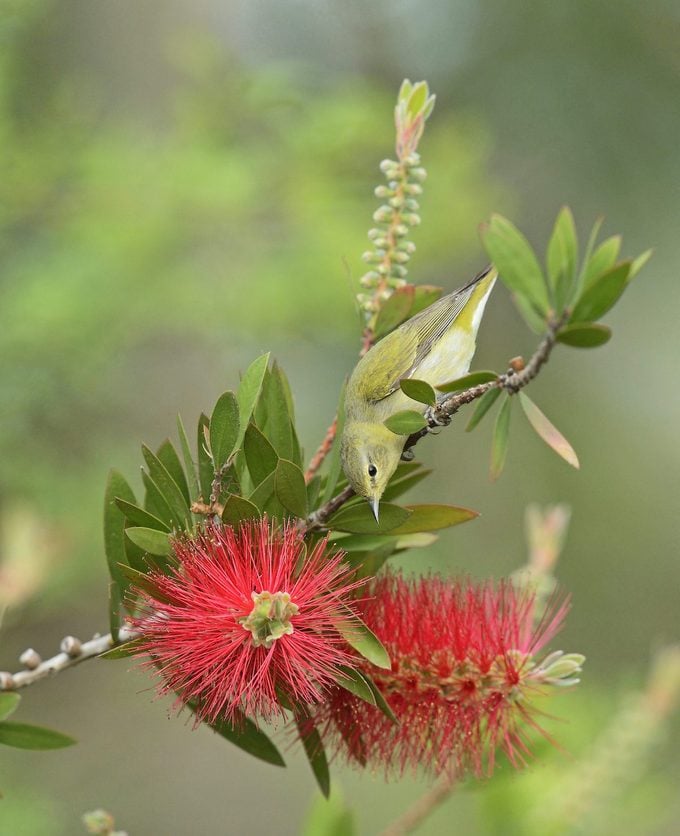
There’s a good reason crimson bottlebrush appears frequently in southern landscapes; it’s incredibly heat-tolerant. This shrub will bring pollinators such as native bees and birds into your backyard. Hummingbirds, especially, love the red flowers!
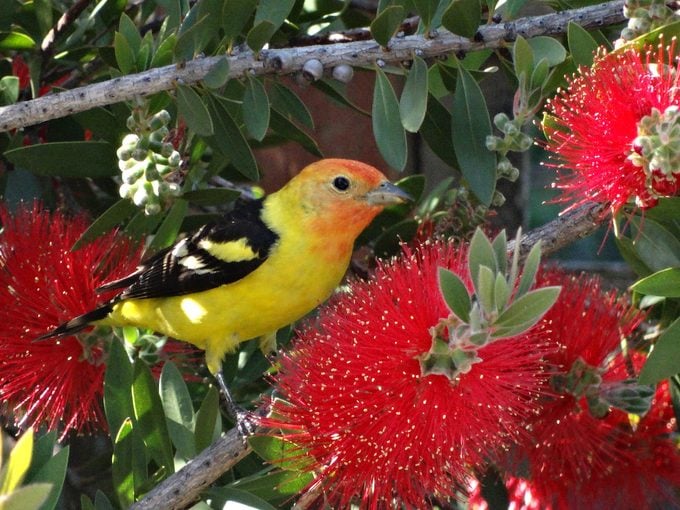
In addition, its blooms delight intermittently all year in warm regions. Even better, the crimson bottlebrush generally doesn’t require a whole lot of maintenance; prune in early spring or late summer. Gardeners appreciate the shrub’s showy blooms, but the foliage’s coppery-green leaves add interest, too. Leaves have a lemon fragrance when crushed.
Next, check out the even more colorful year-round shrubs and bushes.




















